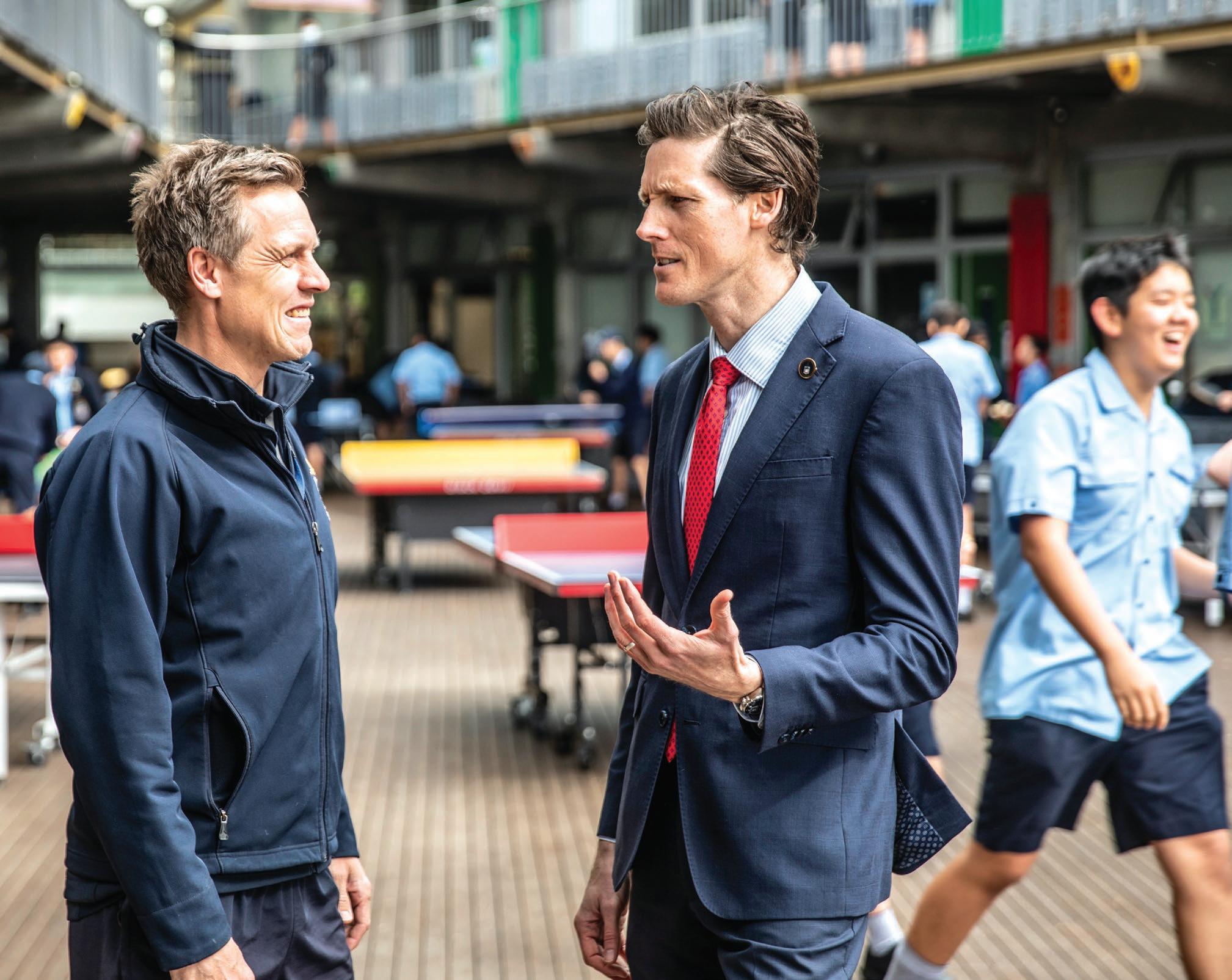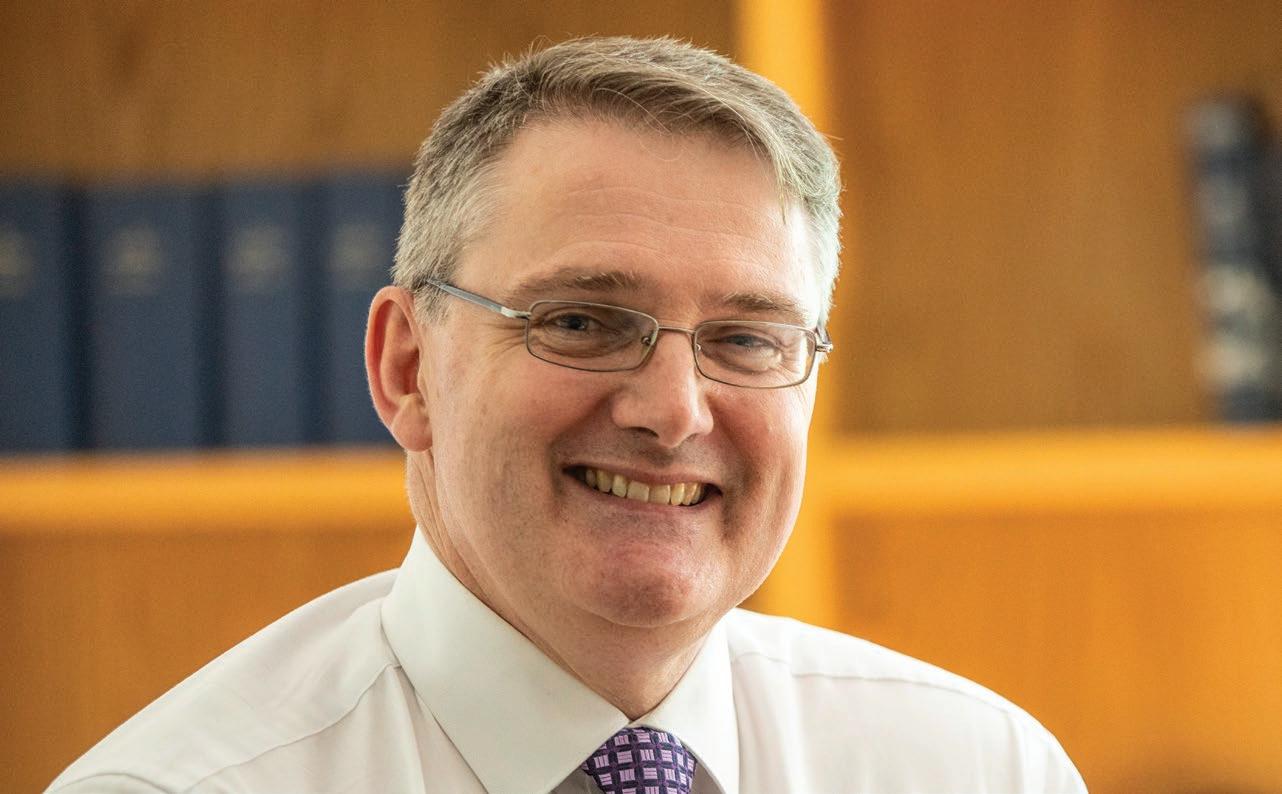
6 minute read
The role of the 21st Century library
Two Grimwade teachers make the leap to Wadhurst
Two of the newest faces at Wadhurst are actually Melbourne Grammar School stalwarts. Both Simon Calbert and John Donaldson have transferred to our secondary school campus after teaching younger students at Grimwade House for many years.
Simon began at Grimwade in 2009, while John joined the School in 2013. Both now bring their training, skills and experience to a new student cohort, and are keen to share what they are enjoying about this next stage in their respective careers.
A BRIDGE BETWEEN CAMPUSES For Simon, moving from his role as a Physical Education teacher at Grimwade House to Head of Sport at Wadhurst in 2021 was a way to keep progressing in his career without having to move away from Melbourne Grammar.
I wanted to keep learning under different types of leaders and in different settings, and to take on the challenge of working with students across a different age group.
Simon Calbert
“It was also an opportunity to work on and solve new educational problems, which is a really satisfying part of my job, and to build relationships with different staff members,” he says. Of course, a number of Simon’s students are those he taught while at Grimwade House, which he sees as an opportunity to continue these connections.
“Given my history with some of the Wadhurst students, there’s an opportunity to discuss what works with particular students, and to communicate where they’re coming from to other Wadhurst staff members,” he explains. “Not every secondary school teacher gets that kind of briefing.”
FINDING NEW WAYS TO SUPPORT STUDENTS Having taught at an international school outside Dubai, as well as at independent schools here in Australia, John says transitioning to teaching English and Humanities at Wadhurst in 2022 was “the right amount of change”.
“I had largely achieved what I wanted to at Grimwade, but I never felt the urge to leave the School – you couldn’t pick a better place to turn up to work every day,” he explains. “But at secondary school level you’ve got a different breadth of learners, and I feel I can nurture the fundamentals while also enjoying more robust conversations with older students.”
John adds that the strong pastoral care system in place at Wadhurst was another factor in his decision to stay at Melbourne Grammar. “I wanted to be part of what the House system employed at Wadhurst offers the students,” he says.
John adds that it has been the right move for him: “It’s the School’s philosophy of developing young people, and the respect I have for the School’s leadership team as a whole, that made me want to stay on here.”
From left: Simon Calbert and John Donaldson on the Wadhurst deck.
Relationships and communication are key to a sustainable school
After 24 years away from his home state, Damian Ferguson has returned to Victoria, bringing international experience to the role of Melbourne Grammar’s Director of Business and Finance.
What attracted you to working in schools, and why did you choose Melbourne Grammar? I wanted to have diversity in responsibility and experience in my career, as well as an opportunity to be able to contribute. Working in education offers me those opportunities. Every day is different, and every day brings a new challenge.
In relation to Melbourne Grammar, the quality of the organisation, the experience of the people leading the School, and the governance structures at the School were all very appealing. It was an easy decision to apply.
What are your responsibilities and priorities? My role focuses on financial management so we can maintain the quality of our educational program. I also am looking forward to facilitating and contributing to change – for example, strengthening our internal accounting systems and reporting.
In the short term, my priority has been to listen, observe, and absorb what I can, drawing on the many years of knowledge from those who have come before me.
My longer-term priority is to see where I can enhance the transparency, accountability, and viability of the School, and the relationships that keep Melbourne Grammar operational. I’m particularly excited by our current work relating to our strategy as outlined in Towards 2030.
What’s the most important thing to get right in this role? The relationships the School has with everyone from parents right through to our service partners, whether they are banks, bus service providers, or our canteen staff, are vital. It’s good communication that supports those relationships. If we can get those two things right, that will help us to build a sustainable future for the School community.
Is Melbourne Grammar different to other schools? There is a calmness throughout the campuses, a focus on quality, and a strong commitment to their profession among staff that isn’t easy to find.
The contribution of volunteers, such as the members of Friends of Grammar, is also extraordinary. I’m impressed by their strong focus on making improvements that will benefit the School as a whole.
What’s something people would be surprised to learn about you? I’m one of eight children, which gives you a different perspective on relationships and opportunities. I saw that it wasn’t all about me, and that’s how I feel about my contribution to schools. Even if I’m not a teacher, I’m still part of a community, and that’s part of giving back. Melbourne Grammar School exists to inspire young people, provide opportunity and contribute to positive change in the world. We seek to provide the highest quality education for our students.
In 2021, 1808 students were educated by 219 teaching staff members. That is a ratio of 9:1 – one of the lowest in Australia.
As a not for profit entity, it is pleasing to report that our financial position is strong and the School is debt free. Our consolidated total income for 2021 was $84.2m and our expenditure totalled $68.4m. The surplus has largely been reserved for future capital projects including the proposed Centre for Humanity and the new Junior Primary building, as envisaged in the School’s strategic plan Towards 2030.
It should also be noted that the capital expenditure was relatively low in 2021. It does fluctuate from year to year with an average of around $10m per annum from 2000 to 2021.

About Damian Ferguson Damian Ferguson commenced in the role of Director of Business and Finance in July 2022.
Immediately prior to this he had held the role of Chief Financial Officer at Knox Grammar School, a K-12 day and boarding school in Sydney with enrolments of around 3,200. He has also worked at an international school in Singapore, and at a range of schools in Victoria and New South Wales.
Damian is highly regarded within the education sector, not only for his many achievements so far, but also for his strong values, work ethic and professionalism.
2021 financial snapshot
We received approximately $4,500 per student in State and Commonwealth government funding in 2021. By way of comparison, 2018/2019 figures made available by the Productivity Commission indicate that government schools received $19, 327 per student and, on average, $10,678 per student was given to other independent schools across Australia.
There is no question that the School we know today is a result of the support and generous philanthropic commitment of the School community over the past 164 years and we thank those who have contributed to the continuation of this situation in 2021.
Damian Ferguson









